Why Manitou’s Revenge is my kind of race:
I moved to the Adirondacks after a summer spent working at Galehead hut in the White Mountains of NH and hiking as much as possible in between breakfast and dinner chores. I had dabbled in trail running/speed hiking a bit in college (as cross-training for alpine ski racing), but became enamored with the pursuit of moving fast in the mountains while at Galehead and knew I wanted to live somewhere with great hiking trails on which to challenge myself. For my first few years in the Adirondacks I spent many hours pushing myself on the trails of the High Peaks, running when possible but mostly hiking and learning to cover the technical and steep trails more and more quickly.
I never really considered myself much of a runner. As trail running grew in popularity I began to seek out some of the more runnable trails in the High Peaks, and I entered my first race (Vermont 50k) after reading Ultramarathon Man in 2006. Yet I remained a speed hiker first and foremost, with long mountain linkups and personal best times (I hadn’t yet heard the term FKT) being my primary motivation. Over the years I entered more races and did my best to perform well in them, but I still wasn’t really a “runner.” I shunned pavement or even dirt roads and did most of my training on trails that imposed a serious speed limit due to their rugged nature, and I spent the long Adirondack winters backcountry skiing and basically doing no running for four or five months of the year.
My son Finn was born on June 29th, 2012, and I think of his birthday as the day I became a “runner.” Long days in the mountains skiing, rock climbing, and hiking were not in my future, so I decided to focus on running 100% and even embraced running on pavement for the convenience of being able to train right out the front door. I didn’t know it at the time, but it turns out that training for road races (from 5k to marathon) would be just what I needed to improve as a trail runner. 2013 was something of a breakout year for me, as I found myself placing well and setting big PRs in nearly every race I ran. I ran a Presi Traverse FKT as well (quickly broken by Ben Nephew, but by less than a minute so I knew I had put up a good time), finding that my mountain running skills remained strong despite spending less and less time on mountain trails.
When race director Charlie Gadol introduced Manitou’s Revenge last year it immediately caught my eye as one of the only races I knew of that would incorporate a large amount of truly rugged hiking terrain. Unfortunately it was the same weekend as the Great Adirondack Trail Run, which I direct along with the Mountaineer outdoor shop in Keene Valley, so I wrote it off. I thought that would be the case again this year, but when the Mountaineer decided to move their race up a week I jumped at the opportunity to compete in Manitou’s, and made it my primary training objective for the first few months of the year.
In early May I took a one-night trip to the Catskills to run a couple sections of the course (Palenville to Platte Clove and Mink Hollow to the finish) and focused my training almost entirely on mileage. One thing I didn’t do was a lot of mountain running—as a stay at home dad I just can’t find the time to get and run out for more than a few hours. I’ll admit I was a little scared to follow the Strava logs of Adam Wilcox and Ryan Welts, with their plethora of 20+ mile, 9000+ vert days, but I believed in my training plan and hoped the high mileage on easier terrain would be enough.
My main training block, starting the week after Boston Marathon, was a six week stretch averaging 65 miles per week that included one 85mi week and three weeks in the low 70s, as well as some cross training on roller skis and strength work two or three times a week. Other than one stretch last summer leading up to Vermont 50 this was the most volume I’ve ever run over six weeks. By the end of this block I was starting to feel pretty bad, with tired legs on almost every run and the feeling that I was constantly fighting a cold. Lack of sleep stemming from outside factors (chaperoning a field trip to Boston, another trip to Boston, preparing for the Mountaineer’s race) also contributed to the feeling of malaise. I don’t think I was overtrained, but I was certainly a little worried, especially knowing the strong field that was assembled for Manitou’s this year.
I listened to my body, and in the seven days leading up to Manitou’s I took three days completely off and only ran more than 3.5mi twice—a much more drastic taper than I would normally employ. My friend Chris Fey, from Keene Valley, ran Manitou’s as well, and we traveled down together and camped at North/South Lake, where we would be joined by Chris’s father who was crewing for him. We were both sniffling and blowing our noses constantly on the drive down, but my body was feeling good and ready to race. Mentally, the pressure was off. Where I had once hoped to race for the win, I had amended my goal and planned to take the race as it came, listening to the terrain and my body and just trying to have a good day on the trails without blowing up. If this put me in position to win I would take advantage of it, but if I had a bad day and couldn’t compete I wouldn’t beat myself up.
Race Day
I never plan to get much sleep before a race, especially camping. I can’t say I expected to sleep for only an hour and a half, though. As annoying as it was to have neighbors that stayed up talking until 2:30, I didn’t really mind. I just told myself that I wouldn’t be sleeping anyway, and lay quietly in the tent trying to empty my mind of thoughts. Somewhere in there I managed to nod off for a while—I think the neighbors went for a late night swim—but I was up as soon as they returned. At 3 I knew I wasn’t going to get back to sleep before the alarm, so I got up a bit early and started to get some food in my system. Chris woke shortly afterward and his dad drove us to the start with plenty of time to spare. I was happy to see Ryan and Kristina there early, and Kristina was kind enough to bring my support gear to Palenville, where Cory would start crewing me. I greeted other friends who were racing, and finally met Adam Wilcox in person.
Charlie gathered the first wave and fired the starting gun (actually he said something like “um, go”) and we were off on the three mile easy road section. My legs felt springy and fast from the start. I mostly led at about 7:40 pace, and would have entered the woods in the lead if Chris’s dad had been at the turnoff with my waist pack. Fortunately he was just up the road at the parking lot, so I took a minute to get my pack and then hit the woods a little bit behind. Climbing at my own pace, I caught the main group maybe ten minutes later and decided to hang out at the back of the pack. I figured some people might have gone ahead, but Ryan, Ben, Adam and Brian were all there and that was good enough for me. I’d never met Denis (last year’s winner) and wondered if he was in the pack as well. I think Ryan was setting the pace, although the pack was spread out enough that I couldn’t always tell.
The climb up to the Escarpment Trail and then over Acra Point was surprisingly quick and easy, and we did some running on the ridge before the trail steepened for the Blackhead climb. The pack spread out a little more and I think we lost a couple of runners off the back at this point. All of the climbing was feeling quite easy to me, and it’s a good thing I wasn’t leading or I probably would have pushed the pace and done some damage to my legs. We summited Blackhead and the pack began to get a bit smaller once we hit the technical descent (although we briefly gained Denis, who had started in the second wave and caught us at a blistering pace, yelling “where’s Ryan” and immediately gapping us all). Pretty soon the chase group was made up of just Ryan, Adam, Brian, Ben and myself, with Denis pushing the pace somewhere up ahead.
We climbed up to Stoppel Point together and then mostly followed Ben, who kept us on course at a couple of confusing sections with his intimate knowledge of the Escarpment Trail. The descent after North Mountain was incredibly technical, and I focused on moving smoothly and effortlessly and trying to use less energy than the runner in front of me. It was a blast to run with this crew as we were all moving well on some gnarly terrain, and I mostly listened as they joked or talked about running.
Ben and Brian were out of sight, and I ran the descent completely comfortably and in control. The course loses almost 2000ft over four miles, and I didn’t want to risk any damage to my quads so early in the race. Somewhere toward the end of the descent I heard a runner coming up hot behind me and looked back to see Adam. We chatted a bit about our kids as he passed and then I told him to go, but he backed off his pace a little and I followed him into the Palenville aid station at mile 21. Cory was there for me, and he gave me an update on Ben and Brian (about 3min ahead), switched out my bottles, and handed me a hat filled with ice. Adam and I left the station together and ran the road section until it was time to turn uphill for a long climb up toward Kaaterskill High Peak.
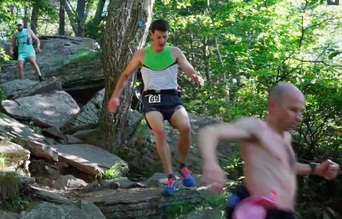 More Escarpment
More Escarpment Cory gave me my pack and more ice for my hat, and told me I’d maintained the same 3min gap to Ben and Brian. I also picked up trekking poles on Cory’s recommendation, grabbed a coke and a ginger ale at the aid station, and made my way up the road to the trail for Indian Head. The first mile of the trail is runnable, and it felt awkward trying to figure out the rhythm with the poles, which I haven’t used in a while. As soon as the trail turned uphill in earnest I was pumped to have poles, as I’d started feeling a little cramping in the hamstrings and was able to avoid that feeling completely by relying on the poles to lift my body up the myriad of ledges on the Devil’s Path. Once again I made no effort to catch Ben and Brian, trusting that by saving energy across the Devil’s Path I could make up a lot of time in the final miles of the race. Occasionally I ran if the trail was truly flat for a few steps, but mostly I was content to hike and concentrate on giving my legs as much of a break as I could using the poles.
Poles were also helpful on the descents: I employed the double-pole-plant jump over and over again, lowering my body down from hundreds of knee-high ledges with very little impact. I felt that they might be slowing me down some, but knew that the energy and pounding that I was saving was well worth a few minutes. As I approached the top of Twin, the second peak on the Devil’s Path, I was surprised to suddenly see Ben and Brian running directly toward me. Ben was even more surprised—he gave me a deer-in-the-headlights look and immediately turned around and started running, with Brian following. We got to the spot where they had missed a turn 30 seconds later, so I was glad to see they hadn’t lost much time, but I thanked them all the same for the little gift. Now that I had contact I could see that Brian was having trouble on the descents (I didn’t know until the finish that his shoe was beginning to fall apart, giving him very little support especially for descending). Still, I let them both go ahead again and continued to hike at my own comfortable pace.
I don’t think I saw them again until after the big Sugarloaf climb. Somewhere on the descent to Mink Hollow I caught a glimpse of both Ben and Brian, and passed Brian at a particularly tricky spot toward the bottom. The three of us rolled into Mink Hollow very tightly spaced, with Ben in first. I got a new pack from Cory and some more ice for my hat, and when I tried to give him my trekking poles he told me to keep them for a bit longer. I didn’t argue, with the biggest climb on the eastern Devil’s Path up next. After getting some Coke from Charlie I headed up, a little ways behind Ben but within striking distance. I pushed on the poles with all my strength, feeling sore in my shoulders and arms but knowing that I wouldn’t need those muscles soon. I could see Ben getting closer and closer as we climbed, and just before the top I caught and passed him. I thought he would stick with me, but as I topped the climb and starting jogging I was surprised to find that he was letting me go. It was earlier than I’d planned, but I knew it was time to make my move.
The easy running along the top of Plateau seemed to go on forever but I finally hit the turn onto the final 15mi stretch with nobody in sight behind me. I had run the section from Mink Hollow to the finish in May as well, and I knew that this section was very challenging, with difficult footing on some very long descents and a couple of deceptively tough climbs. In fact I had been thinking of it as the crux, and consciously saving myself all day in order to have a chance of running well for the last section after leaving the Devil’s Path (obviously the Devil’s Path is more challenging on its own, but I didn’t think it would be the place that the race was won or lost because everyone would be hiking anyway). As I descended towards Silver Hollow I focused on maintaining my momentum and hoped to keep enough of a lead to remain out of sight to Ben and Brian, but I was still running conservatively on the tough terrain in order to keep from wasting energy. I started to think of my aid station plan: drop trekking poles, switch out bottles, ice in the hat if Cory had any, grab some Coke and go. Ideally I’d be in and out before the chasers could catch a glimpse of me.
Cory wasn’t at the aid station when I arrived, which didn’t surprise me (it’s a drive and a hike from Mink Hollow with not a lot of time to spare). I dropped my poles and asked the volunteers to make sure Cory got them, then had them to fill my bottles: Coke in one, water in the other. I was out of there in no time, yelling back to ask how far to the next aid station. When they said “five miles, Mount Tremper” I figured they meant six, which is the distance to the Willow Trail junction where the aid station had been last year. Mount Tremper would be 8 miles. As I started the climb out of the notch I kicked myself for not getting Coke in both bottles—I’d been getting my calories from fluids almost exclusively during the day with good results, but would have to switch to gels and solids in order to get enough energy to make it to Willow.
I climbed Edgewood Mountain quickly but comfortably, then started the long descent to Warner Creek, watching the overgrown trail intently to make sure I didn’t trip on hidden roots or rocks. At one point I ran right off the trail, backtracking to find the ninety degree turn I’d just missed. Approaching the bottom of the long downhill I kept imagining I heard runners behind me, but nobody was in sight and the trail was in much better shape than it was during my May scouting mission. I hit the flats before the creek crossing and was psyched to find the trail drier and more runnable than I remembered. I heard a noise ahead and looked up in time to see a baby bear shimmy up a tree just in front of me. After a moment’s pause to check for mama bear I kept moving: she wasn’t ahead of me on the trail and I didn’t want to wait to find out if she was anywhere else nearby.
Although the day wasn’t very hot I’d been looking forward to a dip in Warner Creek for a while, and with wet feet from the mud just before the crossing I had no reason to try to stay dry. I plunged face first into the water and got thoroughly soaked before standing up again and crossing, then continued to move, hoping to get out of sight again if anyone was close behind. I needed to stop and tighten my shoelaces, as my wet feet were now sliding around inside the shoes, so I found a spot where I could look back at the crossing. After tying the shoes with no visible pursuit I was back on the move, and I really started to push the pace.
There’s a long, switchbacking climb after the creek leading up the shoulder of Carl Mountain, and I hammered up the switchbacks, running whenever the grade was gentle and power hiking with all my might when it was steep. I had been gauging my effort by my breathing all day, making sure it was always under control, but now I was hiking at a one breath per step effort: in, out, in, out, step, step, step, step. I had run out of Coke and eaten my only gel. It was tempting to skip food so late in the race, but that would have been stupid. I contorted my arm around to grab whatever I could find in my pack’s side pockets, and managed to chew and swallow a few mini snickers bars left over from Halloween without choking on the chocolate. I knew that if anyone caught me it was out of my hands—I was moving faster than I could have imagined and had no lack of energy.
I kept waiting for the top of the climb, knowing that the next mile and a half had some great running terrain, but it seemed to never end. Finally the trail leveled out and I broke into a fast run, feeling great and thinking of my aid station plan for the Willow junction (drop everything and grab a handheld if Cory is there, otherwise Coke in one bottle). The junction came and went with no aid station, so I knew I’d have to make it to Mount Tremper. I wrestled half a protein bar from my pack and ate that, then continued to push the pace, thinking I could break 11hrs if I could make it to the top of Tremper in 10:30. A half mile of fast climbing brought me to some more runnable terrain, and I soon saw a woman running back down the trail toward me who informed me that the top was just ahead (and that she was out chasing a bear away so that we runners wouldn’t encounter it). The fire tower appeared ahead, and I wasted no time as I started to descend, making a beeline for the lean-to to get a bottle filled with Coke.
I thought I’d fly down Tremper, but the uneven rocks made a fast pace difficult. At times the road was smooth and I could open it up, but mostly I found myself backing off on the pace to prevent disaster. I was glad I had run the Tremper descent already, because it feels never-ending and could have been very demoralizing. I wasn’t too worried about a chase at this point, but did occasionally glance back to make sure nobody was about to surprise me. When I saw Kristina and the volunteer at the last aid station I was elated to know that I only had a mile to go and the race was basically won. Crossing the line after an easy mile was one of the better feelings I’ve had at any race: I had put in a great effort, stuck to my race plan diligently, run for almost 11 hours with no low points, and prevailed in a very strong field.
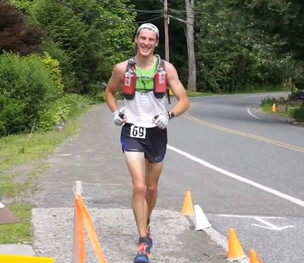
Manitou’s was the perfect course for me, and I was so excited to get a chance to race on such gnarly terrain. If there’s another ultra in the US as rugged as this (aside from Barkley) I’d be surprised. I told Charlie at the finish line that it was the best race I’ve ever done. Part of that was my excitement in the moment speaking, but on further reflection I think I’d stand behind that feeling. Thanks to Charlie for putting on such an amazing event, the volunteers for making it possible, and the New York DEC for allowing it. And a personal thanks to Cory for his awesome crewing job, and John Fey and Kristina Folcik-Welts for their help as well.
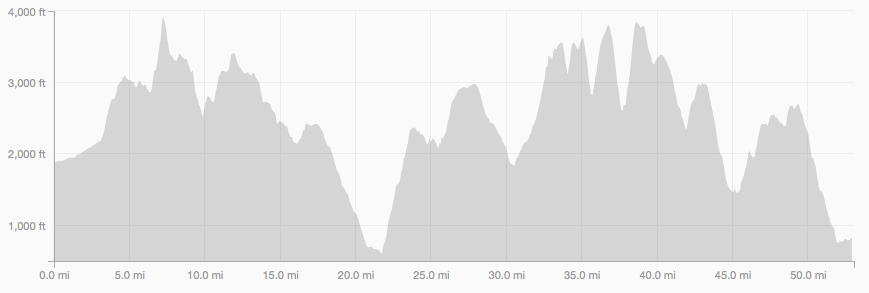
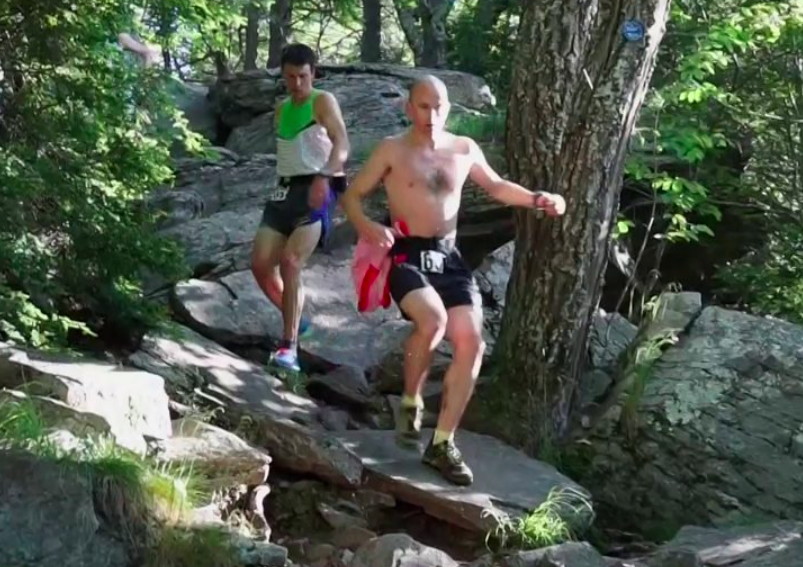
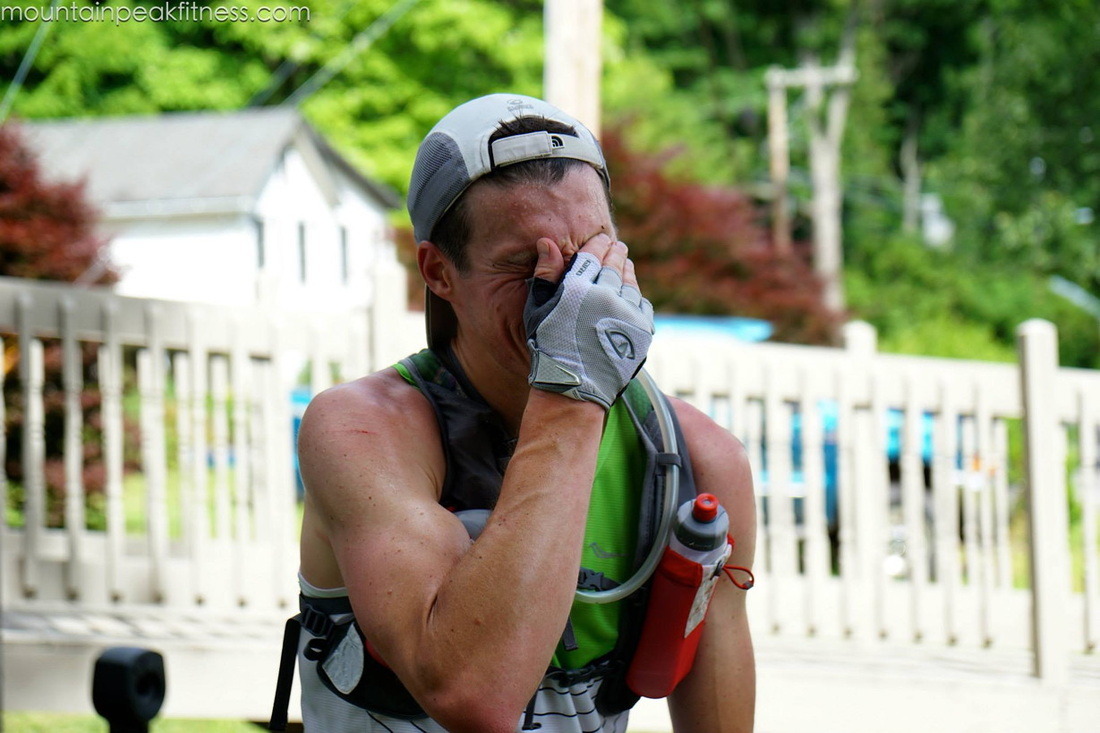
 RSS Feed
RSS Feed
